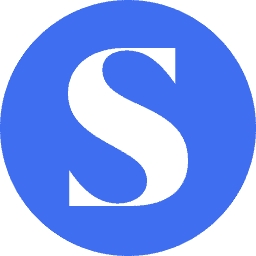Summary
Paid search continues to dominate digital marketing budgets in 2025, with good reason. As more businesses compete for consumer attention online, targeted search ads connect you directly with people actively looking for what you offer. But rising costs across platforms mean marketers must focus on efficiency and results—not just visibility.
The push for better ROI comes as platforms like Google and Microsoft introduce more automation while providing less transparency. Many advertisers find themselves spending more for the same results or struggling to prove value to stakeholders. The most successful paid search programs now prioritize quality over quantity, targeting users most likely to convert rather than simply generating clicks.
Companies managing substantial search advertising campaigns face unique optimization challenges. From keyword selection to audience targeting, landing page design to bid management—each element offers opportunities to reduce waste and amplify results. When executed properly, these improvements compound to transform paid search from a necessary expense into a predictable revenue driver.
Paid Search Metrics That Drive Real Results
Paid search advertising allows businesses to display ads when users search for specific terms on platforms like Google, Bing, or Amazon. Unlike organic search, which requires earning rankings through SEO, paid search provides immediate visibility through a bidding system where you pay when someone clicks your ad. This makes it particularly valuable for capturing purchase-ready prospects actively seeking solutions.
While clicks and impressions provide baseline visibility data, sophisticated paid search programs track deeper metrics that connect directly to business goals:
- Conversion Rate: The percentage of users who complete desired actions after clicking your ad. This metric reveals how effectively your landing pages and offers resonate with your audience.
- Cost Per Conversion: Total spend divided by number of conversions. This calculation helps you understand exactly how much you’re paying to acquire each lead, demo request, or purchase.
- Conversion Value: The revenue or profit generated from each conversion. Tracking this figure allows you to prioritize keywords and campaigns driving the highest-value customers, not just the most customers.
- New Customer Acquisition Cost: What you pay specifically to acquire first-time buyers. Separating this from overall conversion costs helps you evaluate long-term growth strategies versus retention efforts.
- Customer Lifetime Value (LTV): The total revenue a customer generates over their relationship with your business. Comparing this against acquisition costs reveals which campaigns deliver the most profitable customer relationships.
True ROI measurement requires connecting paid search data with your CRM or sales platform. This integration enables attribution modeling that shows which keywords, ads, and targeting parameters deliver the highest return. For ecommerce businesses, tracking post-click behavior through your site analytics reveals valuable patterns about which products and categories perform best through paid search channels. B2B companies benefit from tracking lead quality metrics like sales qualification rate and deal velocity to determine the actual business impact of their campaigns.
Want to learn how paid search automation can transform your campaign performance? Discover advanced techniques for reducing manual workload while improving results.
Optimizing Your Keyword Strategy
Developing a comprehensive keyword research process forms the foundation of any successful paid search campaign. Focus on high-intent keywords that signal purchase readiness—terms like “buy,” “pricing,” or “near me” often convert at higher rates than general informational queries.
The most effective keyword strategy combines precision with continuous refinement across these key areas:
- Commercial Intent Terms: Keywords containing transaction signals like “purchase,” “deals,” or specific product names tend to attract users closer to making decisions. These typically cost more per click but deliver higher conversion rates and return on ad spend.
- Negative Keyword Implementation: Regularly review search query reports to identify irrelevant terms triggering your ads. Adding these as negative keywords prevents wasted spend on unqualified traffic and improves your quality score over time.
- Match Type Strategy: Balance reach and precision by using different match types strategically. Exact match works best for high-performing keywords with proven ROI, while broad match combined with audience targeting can uncover valuable new search terms your competitors might miss.
Successful keyword optimization requires both analysis and intuition. The most profitable terms often emerge from examining customer language patterns rather than industry jargon. Regular performance reviews at both keyword and ad group levels ensure you can quickly shift budget toward what’s working and away from what isn’t.
Crafting Compelling Ad Copy That Converts
Your ad copy serves as the critical bridge between a user’s search query and your landing page. The most effective ads directly address the searcher’s intent while differentiating your offering from competitors. Three components work together to create ads that drive qualified clicks:
Headlines That Capture Attention
Create headlines that incorporate your keywords naturally while emphasizing specific benefits that matter to your audience. Test different emotional appeals—urgency, exclusivity, problem-solving—to discover what resonates most with your target audience. The strongest headlines answer the “why should I care?” question immediately, cutting through the noise in crowded search results.
Descriptions That Drive Action
Build descriptions that support your headline claims with concrete details. Include at least one clear call-to-action that tells users exactly what they’ll gain by clicking. Where appropriate, add social proof like “Trusted by 10,000+ customers” to build credibility. The best descriptions create a logical path from problem to solution while addressing potential objections.
AI-Assisted Optimization
Use machine learning tools to generate and test multiple ad variations without sacrificing brand voice. The best AI tools analyze your existing high-performing ads and suggest refinements rather than creating generic copy from scratch. This balanced approach maintains your unique positioning while benefiting from data-driven insights.
What distinguishes great ad copy from average messaging is specificity. Generic claims like “best service” or “high quality” fail to differentiate your offering. Instead, highlight concrete advantages like “24-hour turnaround” or “15-year warranty” that convey clear value to searchers.’
Mastering Audience Targeting and Segmentation
Modern paid search strategy extends beyond keywords to include sophisticated audience targeting that improves campaign efficiency and conversion rates. The integration of audience data with keyword targeting creates powerful combinations that competitor campaigns often overlook.
The most effective audience targeting approaches include:
- Demographic Refinement: Adjust bidding based on performance data across age groups, income levels, parental status, and other demographic signals. This approach helps allocate budget toward segments showing the strongest response to your offerings.
- Behavioral Targeting: Layer in-market and affinity audiences onto your paid search campaigns to reach people whose browsing behavior indicates interest in your category. Combine these signals with remarketing lists to create powerful custom audiences based on specific actions users have taken on your site.
- First-Party Data Application: Import customer lists to create lookalike audiences or adjust bids for past purchasers. As third-party cookies continue phasing out, businesses with robust first-party data enjoy significant advantages in targeting, precision, and personalization capabilities.
The real power comes from combining these audience signals with your keyword strategy, not treating them as separate approaches. Advanced segmentation allows you to identify which audience segments respond best to specific messaging and offers, creating opportunities for personalization at scale. Testing different audience combinations systematically reveals insights about your customer base that extend well beyond paid search.
Advanced Bidding Strategies for Maximum Efficiency
The difference between profitable and unprofitable paid search marketing often comes down to bidding strategy. Finding the right balance between automation and manual control maximizes both efficiency and performance.
When to Embrace Automation
Automated bidding shines in accounts with substantial conversion data and consistent goals. Machine learning algorithms can process thousands of signals simultaneously, making micro-adjustments impossible at the human scale. Consider these options:
- Target ROAS works well for ecommerce with stable conversion patterns
- Maximize Conversions helps capture opportunities during high-demand periods
- Target CPA excels for lead generation with defined value parameters
However, automation requires oversight. Review performance weekly against pre-automation benchmarks to ensure the algorithms work in your favor.
When Manual Control Makes Sense
Manual bidding provides crucial advantages during these scenarios:
- New campaigns without sufficient historical data
- Seasonal businesses with rapidly changing market conditions
- Testing new audience segments or messaging approaches
- Breaking into highly competitive markets where nuance matters
Effective budget allocation requires understanding the full customer journey. Analyze which campaigns drive initial awareness versus final conversions. Your marketing strategy should allocate funds proportionally to each stage of the funnel rather than focusing exclusively on last-touch attribution.
The most sophisticated approaches combine methods—using automation for stable, data-rich campaigns while maintaining manual control over emerging opportunities and strategic initiatives. This balanced methodology allows for both efficiency and strategic agility.
Landing Page Optimization for Higher Conversion Rates
Even perfectly targeted ads with ideal bidding waste budget when landing pages fail to convert. Improving these crucial conversion points often delivers the highest ROI of any optimization activity.
Message Match: The Critical First Impression
When someone clicks your ad, they form specific expectations about what they’ll find. Your landing page must immediately confirm they’ve arrived at the right place by maintaining consistent elements across the user journey. Headlines should echo the ad’s promise. Visuals need to reinforce the core message. Tone and language should match the ad’s approach. And most importantly, the page must clearly present solutions to the specific problem implied by their search.
Speed Optimization for Better User Experience
Speed determines whether visitors stay long enough to convert. Mobile users abandon pages that take over 3 seconds to load, making page speed a conversion factor as important as content. Implement these core techniques:
- Compress and properly format images
- Minimize JavaScript execution
- Prioritize visible content loading
- Cache resources whenever possible
Structured Testing for Continuous Improvement
A structured testing program reveals which page elements most influence conversion rates. Rather than random experimentation, develop hypotheses based on user behavior data:
“Our heatmap shows visitors focusing on product images but rarely scrolling to pricing details. Testing hypothesis: Moving pricing information above the fold will increase conversion rate by making decision-critical information immediately visible.”
The most effective landing pages maintain a singular focus that is aligned perfectly with search intent. Resist the urge to add navigation options or multiple CTAs that distract from the primary conversion action. Clarity and relevance triumph over comprehensiveness when optimizing paid search campaigns.
Third-Party Platform Advantages for Enterprise Accounts
Native advertising platforms like Google Ads and Microsoft Advertising work well for small to mid-sized accounts. However, as campaigns scale to enterprise level—spanning multiple business units, regions, or product lines—these native interfaces reveal significant limitations.
Why Native Platforms Fall Short for Complex Accounts
Large-scale paid media accounts quickly encounter challenges that overwhelm standard platform capabilities:
- Volume Management: Enterprise accounts often contain thousands of campaigns, ad groups, and keywords—making optimization through standard interfaces nearly impossible
- Cross-Platform Fragmentation: Critical data exists in silos across Google, Microsoft, Amazon, and other platforms—preventing unified reporting and strategy
- Advanced Workflow Requirements: Complex approval processes, role-based permissions, and compliance needs exceed basic platform offerings
- Custom Optimization Rules: Enterprise-specific business logic requires customized automation beyond standard bidding strategies
For organizations managing substantial advertising investments, third-party management platforms aren’t just helpful—they’re critical to success. These specialized tools function as the central nervous system for large-scale paid search operations, enabling the coordination and oversight necessary for optimal performance.
Critical Capabilities That Drive Enterprise Success
Third-party management platforms deliver three essential advantages that make them indispensable for large-scale paid search accounts:
1. Unified Cross-Channel Management
Third-party platforms allow teams to manage campaigns across multiple publishers through a single interface. This consolidation reduces training requirements, streamlines workflow, and enables consistent strategy implementation regardless of where ads appear. For enterprise-scale accounts, this centralization transforms scattered tactical efforts into coordinated strategic initiatives.
2. Enterprise-Grade Automation
Advanced management platforms apply sophisticated rule sets that are impossible in native interfaces. Create custom alerts for performance anomalies, automate budget reallocation based on complex criteria, and implement conditional bid adjustments using proprietary data inputs. These capabilities prove especially critical for accounts with thousands of keywords where manual optimization becomes physically impossible.
3. Advanced Analytics and Attribution
Third-party solutions connect paid search data with broader marketing and business systems. Specialized platforms integrate conversion data from CRM systems, call tracking platforms, and offline sources—providing true cross-channel attribution impossible within publisher-specific tools. This integration reveals insights about customer journeys that remain invisible in isolated platform reporting.
The size and complexity of enterprise paid search accounts make third-party management platforms an operational necessity rather than a luxury. As account scale increases, these specialized tools become increasingly critical to maintaining performance and efficiency. Organizations managing significant paid search investments find these platforms deliver substantial ROI through improved performance, reduced management overhead, and comprehensive visibility across their digital marketing ecosystem.
Campaign Structure Best Practices
Following paid search best practices for account organization directly impacts performance, scalability, and the insights you can gather. A well-structured account simplifies management while providing granular control over budgets and targeting.
The hierarchy of campaign organization should reflect your business priorities and customer segmentation:
- Ecommerce: Structure campaigns by product categories, seasonality, or margin levels. This organization helps align bidding strategies with inventory priorities and profit margins.
- B2B Services: Organize around service lines, industries served, or buyer journey stages. This approach allows tailored messaging for different prospect types and funnel positions.
- Multi-location Businesses: Create dedicated campaigns for each geographic area with local terms and offers. This structure improves relevance while allowing location-specific budget control.
Within each campaign, maintain tightly themed ad groups containing 10-20 closely related keywords. This focused organization enables you to create highly relevant ad copy that speaks directly to search intent, improving quality scores and reducing costs.
Prevent keyword cannibalization by establishing clear rules around match types and keyword overlap. When the same search term could trigger ads from multiple campaigns, you create unnecessary internal competition that drives up your own costs. Use negative keywords strategically to guide traffic to the most appropriate campaigns without overlap.
Data-Driven Optimization Techniques
Consistent, methodical optimization transforms average paid search results into exceptional performance. Rather than making changes based on hunches, data-driven approaches identify specific improvements with measurable impact:
- Performance Segmentation: Analyze results by device, audience type, geography, and time of day to uncover hidden opportunities. These dimensional views often reveal specific combinations that significantly outperform account averages.
- Controlled Testing: Form clear hypotheses and test one variable at a time. This disciplined approach reveals exactly which changes drive performance improvements and builds institutional knowledge.
- Optimization Cadence: Establish regular review schedules with appropriate focus areas. Daily checks for budget and critical metrics, weekly reviews for ad and conversion performance, and monthly sessions for structural improvements.
- Custom Automation: Create rules that monitor performance and make adjustments based on specific triggers. These automated safeguards maintain campaign health between manual optimization sessions.
The most successful paid search specialists approach optimization systematically, building on proven results rather than chasing trends or making random adjustments.
Elevate Your Paid Search Performance with Skai
Since 2006, Skai has empowered advertisers to better connect with consumers across walled garden media platforms. Our Paid Search solution provides unmatched insights and control for campaigns of any size, delivering results that native platforms simply cannot match.
Skai’s award-winning paid search technology helps you:
- Gain transparency into black box campaign types like Performance Max and responsive search ads with industry-first insights unavailable anywhere else
- Analyze the full customer journey from search intent to creative engagement and landing page performance
- Automate routine optimization tasks through customizable rules and workflows that maintain campaign health
- Connect non-advertising signals to your media activation for refined optimizations
- Generate actionable reporting through scheduled, automated templates shared directly with stakeholders
Our unified omnichannel approach connects data across retail media, paid social, and search campaigns to provide holistic performance visibility. For enterprise brands and agencies managing complex accounts, our platform delivers the scale, precision, and integration required to maintain competitive advantage while providing accountability through comprehensive reporting frameworks.
——-
Frequently Asked Questions
1. What is the most important metric for measuring paid search success?
The most important metric depends on your business goals, but return on ad spend (ROAS) typically provides the clearest picture of campaign profitability by comparing revenue generated against advertising costs.
2. How often should I update my paid search keywords?
Review search term reports weekly to identify new opportunities and negative keywords, but conduct comprehensive keyword strategy evaluations monthly to align with changing market conditions and seasonal trends.
3. Are automated bidding strategies better than manual bidding?
Automated bidding typically outperforms manual bidding for accounts with substantial conversion history, while manual bidding provides more control for new campaigns or during significant market changes.







